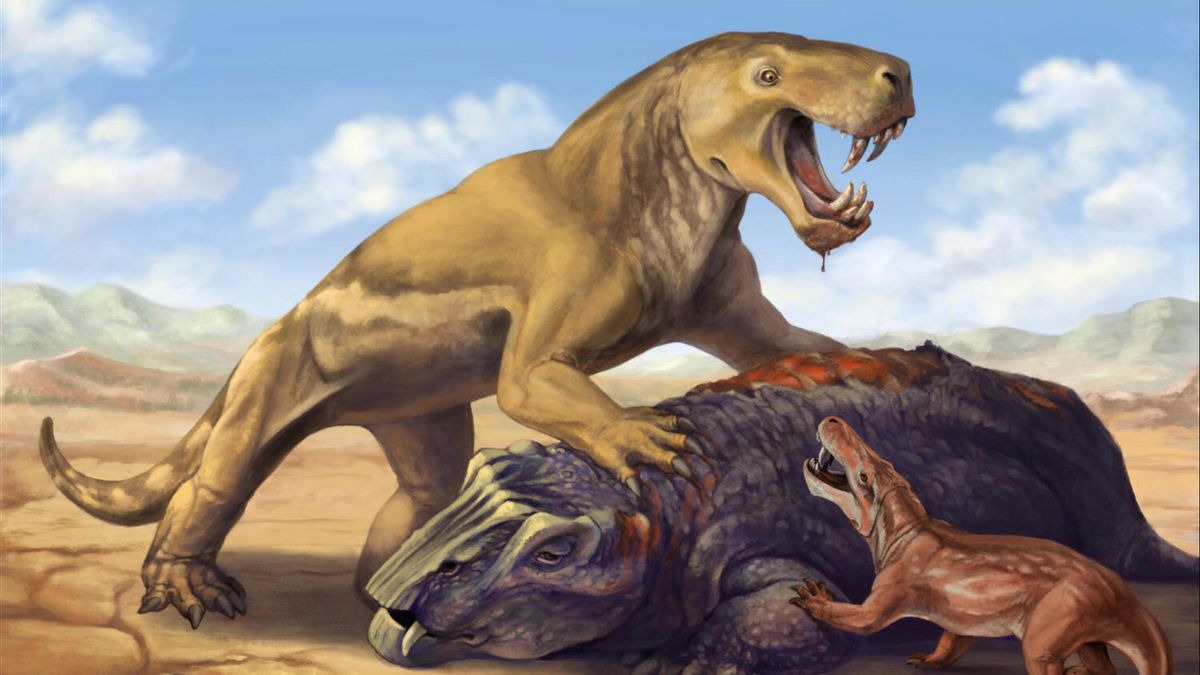JAKARTA - A tiger-sized predator moved thousands of kilometers across the continent around the time of mass extinction more than 250 million years ago, said a fossil from South Africa.
The discovery shows sharpring animals, called Inostrancevia, migrating 11,000 km through Russia's current super Panpea continent to what is now South Africa, filling gaps after another predator there went extinct.
Inostationvia travels a long way at a time when many species disappear, as the world faces catastrophic climate change caused by a large volcanic eruption.
Scientists say the extinctions that occurred at the time reflect current events, as species struggle to survive amid habitat loss and climate change.
About 90 percent of the species went extinct in a "Large Death" 252 million years ago at the end of the Permian geological period, one of five mass extinctions in the fossil record.
In comments issued by the American Association for the Advancement of Science, Dr. Piala Viglietti from the Field Museum in Chicago and one of the authors of the new study 'Inistrancevia in Current Biology' said all the top predators in South Africa went extinct long before the end of the Plant.
"We know that the vacancy in this niche is occupied, for a short time, by Inostrancevia," he explained as quoted by The National News July 1o.
The extinction that formed Great Dying is estimated to have occurred for one million years.
Sampai penemuan baru-baru ini, Inostrancevia hanya ditemukan di Rusia. Tetapi, pemeriksaan catatan fosil Cekungan Karoo di Afrika Selatan oleh Christian Kammerer, dari Museum Scia Alam Carolina Utara, mengidentifikasi dua mammal predator besar yang tidak biasa di wilayah tersebut.
"As we review the range and age of other peak predators commonly found in the area. With this Inostrancevia fossil, we find something quite interesting," explains Dr. Viglietti.
"Local Karnivores were completely extinct even before the main extinction we saw in Karoo, when extinction began in other animals, they were gone," he said.
However, scientists are not sure how Inostrancevia traveled from Russia to South Africa or how long the journey lasted.
The creature, a type of burgonopsing, a group of proto-mamalias belonging to the first sharp-stringed predator, has skin similar to an elephant or rhino, looking like a reptile even though it is related to today's mammals.
It is known that the Geological Period of Permian was attended by Triassic, which was recorded as the arrival of dinosaur fossil records, which existed about 165 million years before disappearing during other mass extinctions.
During a period of about two million years around the mass extinction time of Permian-Trias, there have been four times of changes in which animals become a peak predator, according to Dr. Kammerer, the lead author of the new study. He described these changes as "unprecedented in the history of life on land".
"This underscores how extreme this crisis is, even with its fundamental role in the ecosystem in extreme change," he explained.
VOIR éGALEMENT:
The vulnerability of a peak predator at the end of the visit is reflected in the current situation, with Dr. Kammerer said the large carnivore showed a "high risk of extinction", being one of the first animals to disappear due to hunting or habitat destruction.
"Think about wolves in Europe or tigers in Asia, species that tend to slowly reproduce and grow and require extensive geographic areas to roam and hunt prey, and which are now absent in most of their historical ranges," he explained.
"We must hope that the ancient vertex predators will have the same vulnerability, and will be one of the species that first went extinct during the mass extinction events," he said.
It said, with so many species, ranging from peak predators to insects and plants, which have disappeared due to human activity, scientists assess that we are in the midst of the sixth mass extinction in the world.
The English, Chinese, Japanese, Arabic, and French versions are automatically generated by the AI. So there may still be inaccuracies in translating, please always see Indonesian as our main language. (system supported by DigitalSiber.id)


















